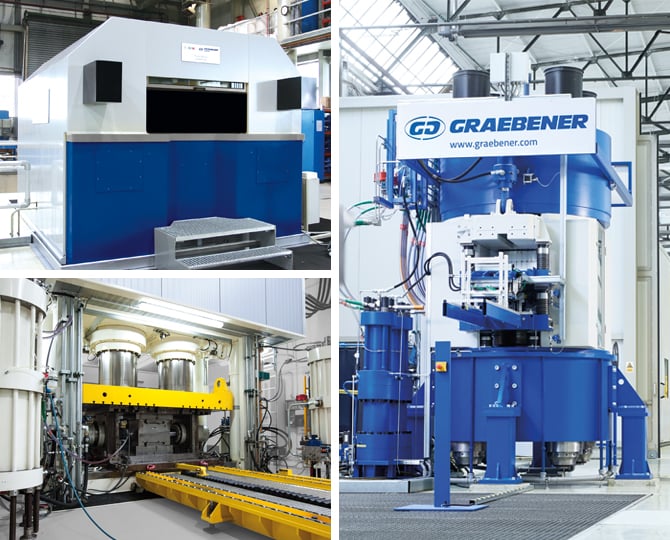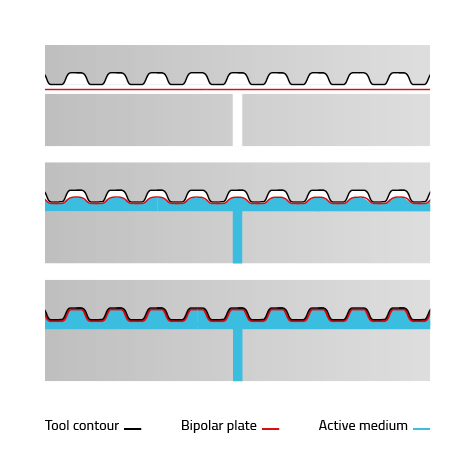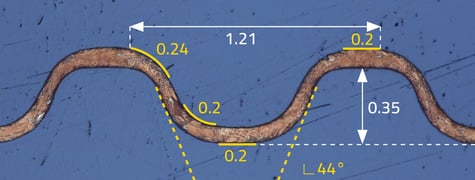With Individual Forming Technologies to the Perfect Product The Technology for Optimum Performance
Using our customized Graebener® forming presses, you can manufacture metallic (bipolar) plates for a wide range of fuel cell and electrolysis applications in series - in various sizes and material thicknesses and in a variety of materials (e.g. stainless steel, nickel, titanium; even pre-coated).
Depending on the application, plate design and your individual requirements, we provide a wide range of technologies - from hydraulic presses for stamping metallic plates to hydroforming presses for gentle shaping of the most delicate geometries. The manufacturing parameters (pressure and travel speed) can always be adjusted flexibly, and thanks to our Graebener® sandwich or multi-cavity tools, you can even produce several plates per stroke.
For those who want to play it safe and initially test their plate design or produce small lots prior to investing in a machine, you can refer to our in-house production laboratory with clamping forces of 1,500 - 10,000 t and table surface sizes of up to 6 x 2.2 m.

What is hydroforming?
As a pioneer in hydroforming, we deliberately rely on the process for which we are known worldwide as experts for the production of (bipolar) plates. The advantages of hydroforming are obvious:
Hydroforming – or external high-pressure forming – is an active media forming process. A metal foil is inserted into a tool gravure and expanded into the forming tool with very high pressure by means of a water-oil-emulsion (see sketch).
Thanks to the even pressure distribution over the entire foil surface, an homogeneous material thickness distribution is achieved, and abrupt stress transitions are avoided. This allows forming even the smallest radii. The material spring back remains low.


The advantages of hydroforming
With so-called external high-pressure forming, extremely filigree structures can be realized in series using extremely thin materials from 25 μm. In contrast to mechanical forming, which at first glance may seem more cost-effective, especially for series production, hydroforming offers numerous advantages that pay off in the long term.
Since plate production for fuel cells and electrolyzers is all about repeatable precision, attention to detail and high value, hydroforming is the optimal process – and one of the quality features that make Graebener® your sustainable competitive edge.
Properties of Graebener® hydroforming plates
| Criteria | Graebener® hydroforming |
| Repeat accuracy in the process | Very high |
| Elasticity after forming | Highly elastic through gentle forming with integrated cooling |
| Wall thickness variation | Very homogeneous over the entire duct cross- section |
| Suitability for pre-coated materials | Ideal: no friction on the water side |
| Contact areas | Almost ideal shaping of the flat contact surfaces |
| Use of different material thicknesses in one tool | Flexible: different material thicknesses can be used per tool |
| Adaptation of the manufacturing parameters in the forming process |
Flexible |
| Tool costs | Low: less wear and fewer tools |
| Number of tool stages | One |
Exemplary Graebener® hydroforming plates

Foil thickness: 100 μm, Material: Alleima Sanergy® LT (316L)

Foil thickness: 50 μm, Material: 304L

Foil thickness: 100 μm, Material: Titanium Grade 1